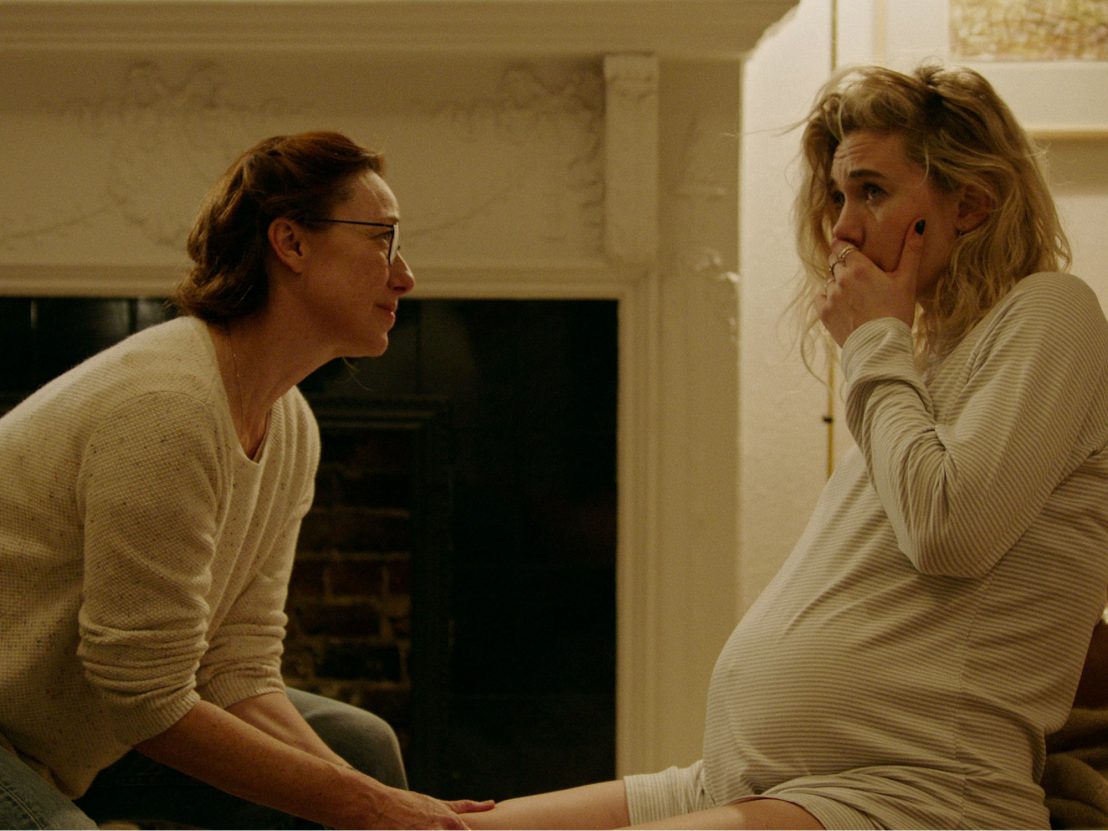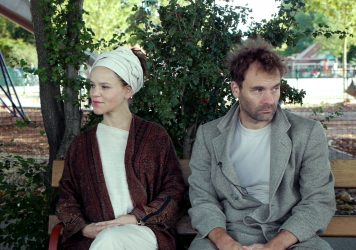
Pieces of a Woman opens with a breathtaking 22-minute long take in which Vanessa Kirby’s character gives birth in real time. It’s an astonishing set-piece that stands out not just for its technical ingenuity, but for how it immerses us in this emotionally-charged situation.
Director Kornél Mundruczó and cinematographer Benjamin Loeb trap us in the high-stakes, painful experience of childbirth by refusing to cut. “Any cut is an alternative for an audience to step out,” Loeb explains. “By not doing that, you’re stuck in whatever feeling you have and there’s no way out. My personal opinion would be that you’re cutting in a scene because your current shot doesn’t hold enough tension or purpose or intent for it to work as a whole.”
By showing the whole birth, we witness the small ways husband and wife Sean (Shia LeBeouf) and Martha (Kirby) help each other to cope – something that becomes a major theme in the film. Martha is thrown off when the midwife she had requested for her home birth is replaced at the last minute by stand-in, Eva (Molly Parker). Sean calms Martha down by making goofy jokes, repeatedly reassuring her and, during the most painful moments of the birth, physically comforting her.
Mundruczó’s decision to shoot the scene in a single take stems from the play of the same name, which he staged in Poland back in 2018 and was inspired by his and wife Kata Wéber’s (who wrote the screenplay) experience of losing a child. “[Mundruczó] showed me his theatre piece, which he hadn’t shown the actors,” Loeb recalls. “Seeing what he was attracted to in the stage play, you immediately knew this had to last for 20 to 30 minutes. This film also feels like a stage play in the sense of not cutting and just throwing the audience into a scene.”

Loeb describes devising the aesthetic of Pieces of a Woman as a process of “deep fear” for Mundruczó, as it was a personal project “so heavy handed in terms of material that he didn’t want it to feel heavy handed in its [cinematic] language. We talked about removing the footsteps of the camera, so the camera didn’t feel like it had a human behind it.” Loeb achieved this smooth movement by using a gimbal, a handheld stabilizer that uses digital sensors to detect and correct unwanted camera shake. This enabled him to move freely around the space, allowing for “the camera to be curious and interested in these characters.”
For Mundruczó and Loeb, committing to the single take was a leap of faith, since they didn’t have enough time to shoot backup coverage of the scene. In the end, they didn’t even need the three days they’d scheduled. “We did four takes on day one, two on day two, and then we called it. It wouldn’t get better. It was take four [on day one] that ended up in the film. The energy on day one was impossible to beat, so even though we got a take that was technically perfect [on day two], it was too perfect for its own good.”
“The hardest part,” says Loeb, “was that Kornél wanted every location to be able to be viewed in 360 degrees. He almost wanted it to be approached like a documentary where anything could happen and the actors could go where they wanted.” That proved a challenge for lighting. “If there was a little tiny corner where I could hide a lamp I would, but everything else was practicals wired to a dimmer board.” There’s no CGI in the finished scene, save for the removal of a lamp on the ceiling, and the digital smoothing of a dent in Kirby’s prosthetic baby bump, which had been damaged during the course of a long day of shooting.
The camera spends almost equal time on the faces of Martha, Sean and Eva, balancing their three perspectives on the birth. In moments when he wasn’t sure which character to focus on, Loeb recalls Mundruczó instructing him to default to Sean’s face. As an outsider to the birth, he acts almost like an audience surrogate. “He’s just there and experiencing this in the way that I was during my child’s birth and the way that Kornél was. You’re a weird non-entity, so deeply in awe and curiosity. You’re kind of in the way but you’re trying to help.”
Of course, the scene is also a showcase for Kirby, and at the heights of Martha’s pain we stay locked on her. “Every time [Martha] had a contraction, the camera would almost fall into her face and be more in tune with her, as if the two, in that moment, become one. The face expresses everything you need to see. You don’t need to see the physical location of pain in order to feel pain. What the audience doesn’t see becomes more visceral because you imagine everything you don’t see.”
During the scene’s tragic ending, Mundruczó finally cuts, leaving Martha to show Sean rushing downstairs in panic to meet an ambulance on the street. “We shot two endings,” Loeb reveals. “Our main ending stayed with Martha, but watching it back it felt no audience member would want to stay with Martha in that moment. It felt wrong to put the audience in that space. We wanted to do an alternate ending where we followed [Sean] out. In the end, we used a little bit of both so it felt like you were still with both characters.”
Just as the memory of the birth haunts Martha and Sean, the scene overshadows the rest of Pieces of a Woman. Mundruczó and Loeb play with the “contraction of time”: the birth progresses quickly, and the pace of the camera’s movement speeds up gradually along with it, as if we’re experiencing the birth as Martha and Sean remember it rather than as it really happened.
In Loeb’s words, “the feeling of time works differently when you’re in a scenario as tense as a birth. You can sit in a room for 17 hours and the next day you only remember five minutes, or it felt like five minutes. That was the intention, to make sure the feeling of time became more and more erratic as you got closer to the birth.”
Pieces of a Woman is available on Netflix from 7 January.
Published 5 Jan 2021

The New Man offers a refreshingly honest look at what it means to bring life into the world.

Kornél Mundruczó’s affecting drama follows a couple who experience the loss of their first child shortly after birth.

Documentary Still Loved uncovers stories of love, hope and courage.